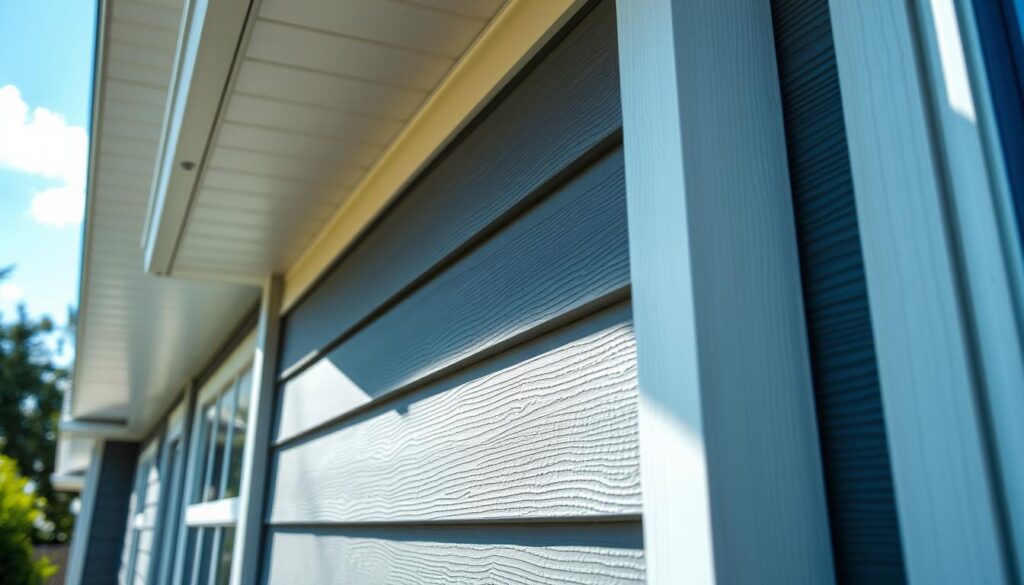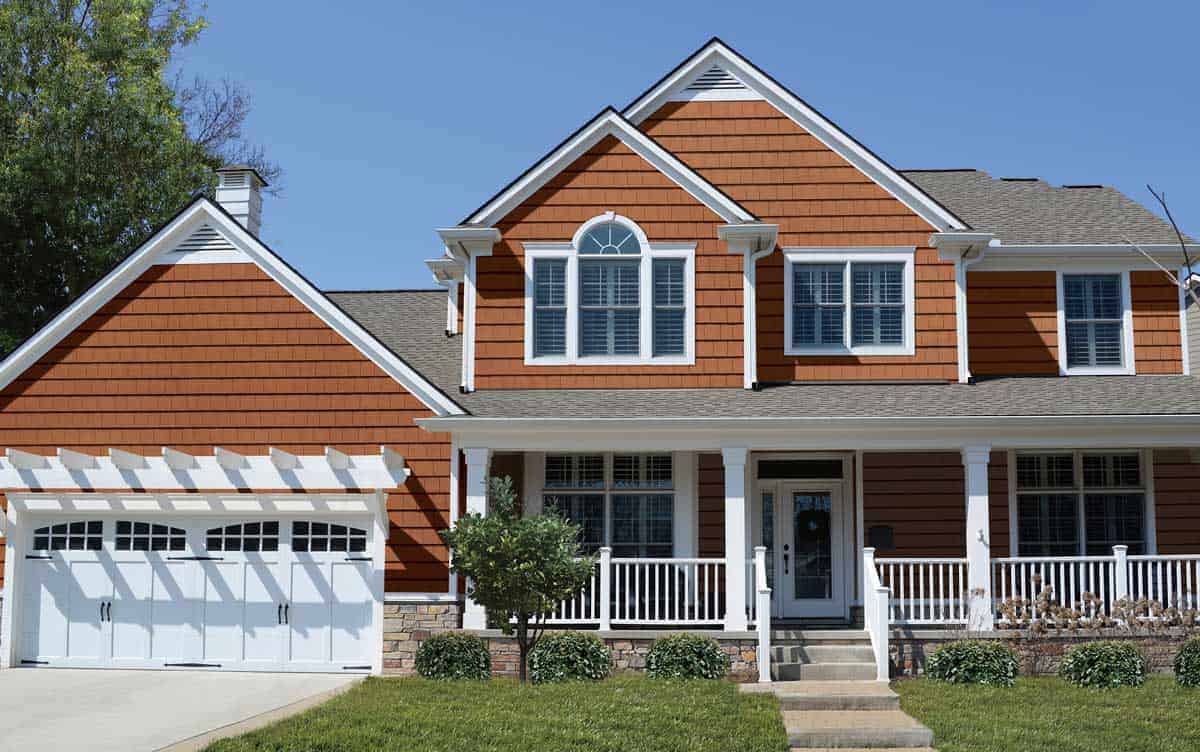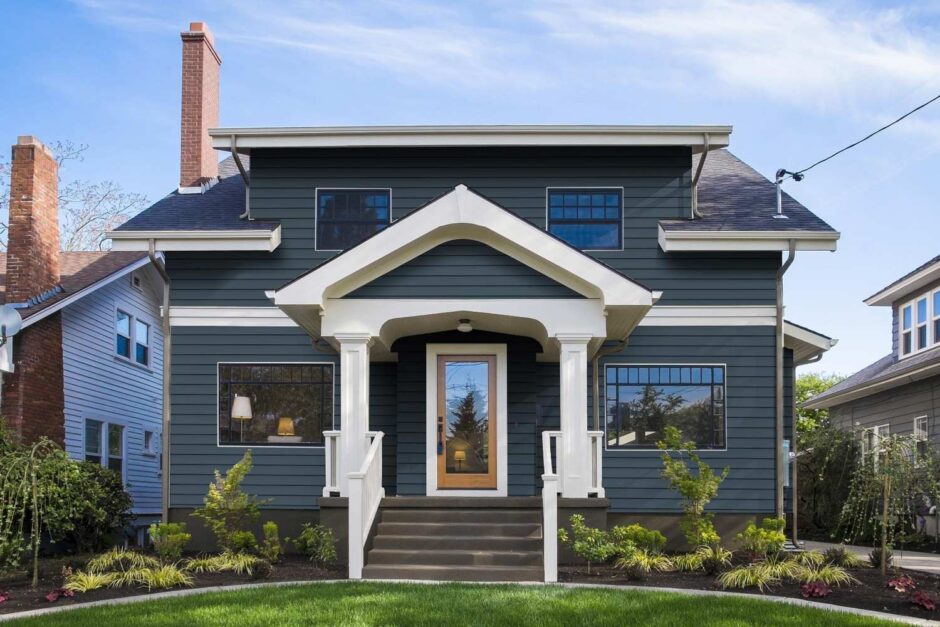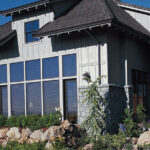How to Choose the Right Siding for Your Home’s Climate
Choosing the right home siding options for your house is key. This is especially true in Canada, where the weather varies greatly. Whether you’re facing cold winters or mild summers, getting weather-resistant siding is important. It protects your home and keeps it looking great. Plus, it saves you money on repairs in the long run.
When picking out siding, think about your local climate. Temperature changes, rain, and typical weather patterns matter a lot. Reports from Natural Resources Canada show that durable siding improves your home’s look and performance. The Canadian Home Builders’ Association says your siding should look good and last long.
If you don’t consider your climate, you may face higher maintenance and shorter siding life. That’s why making the right choice is crucial. It ensures you’re happy now and in the future. You can learn a lot by looking at climate adaptability guides from top siding makers.
Key Takeaways
- Choosing siding based on local climate ensures durability and aesthetic appeal.
- Canada’s diverse weather patterns necessitate weather-resistant siding options.
- Proper siding selection can minimize maintenance costs and enhance longevity.
- Natural Resources Canada offers valuable insights on climate-appropriate siding materials.
- Consulting climate adaptability guides from siding manufacturers can aid in decision-making.
- Balancing aesthetics with durability is key for siding that supports climatic resilience.
Understanding Canada’s Diverse Climates
Canada spans a large area with different climate zones. Each has unique weather impacts that affect the choice of exterior cladding. From the rainy coasts of British Columbia to the cold of the Yukon, knowing these differences is crucial.
Environment and Climate Change Canada has divided the country into several climate zones:
- Pacific Maritime: Known for high rainfall and mild temperatures, especially in areas like Vancouver.
- Boreal: Features cold winters and mild summers. This zone includes Northern Ontario and Quebec.
- Prairie: Has a wide range of temperatures, with hot summers and cold winters. This affects Alberta, Saskatchewan, and Manitoba.
- Atlantic: This zone has moderate temperatures and a lot of rain. It affects Newfoundland and Labrador.
How Climate Affects Siding Choices
The weather impacts in different climate zones guide the selection of siding materials. It’s important to consider things like UV exposure, how well they keep in heat, and moisture protection.
- UV Exposure: In sunny areas, it’s important for siding materials to withstand UV rays.
- Thermal Resistance: In cold areas, choosing materials that keep heat in can lower energy bills.
- Moisture Barriers: In wet areas, cladding must protect against water to avoid damage and mold.
Considering these regional weather considerations helps homeowners choose siding that fits their environment. This ensures durability and protection for their home.
The Role of Insulated Vinyl Siding
For Canadian homes, insulated vinyl siding is a top choice. It offers many advantages. These include energy savings and withstanding harsh weather.

Benefits of Insulated Vinyl Siding
Insulated vinyl siding is favored for its many perks. Here’s why Canadian homeowners love it:
- Better thermal insulation keeps homes at the perfect temperature.
- It cuts down on outside noise for a calmer living space.
- It’s tough against impacts, meaning less damage from hail or debris.
Energy Efficiency Considerations
Insulated vinyl siding shines in energy conservation. Its thermal insulation locks in heat during winter and keeps homes cool in summer. This helps lower the cost of heating and cooling. Energy Star Canada says these materials greatly reduce utility bills.
Durability in Various Climates
Canada’s weather can be extreme. That’s why siding needs to be durable. Insulated vinyl siding stands up to extreme weather. Studies by the Vinyl Siding Institute and the Canadian Housing and Mortgage Corporation confirm its high performance in tough conditions. It protects homes for years with minimal upkeep.
In summary, the value of insulated vinyl siding in Canadian homes is clear. Its energy conservation benefits and strength against the elements make it a smart choice. Homeowners investing in it enjoy lower energy bills and a quieter, more comfortable home.
Comparing Siding Materials
Choosing the right siding for your Canadian home can be hard. Every material has its pros and works best in certain weather conditions. We’ve looked at the top choices to help you pick wisely.

Wood Siding
Wood siding is liked for its natural beauty and warmth. Wood siding advantages are it insulates well, keeping your home warm or cool. Yet, it needs ongoing upkeep, like painting, to stay strong against weather and pests. Still, its classic look makes it a favorite for many.
Fiber Cement Siding
Fiber cement siding is loved for being strong and easy to look after. A key fiber cement resilience factor is it doesn’t rot, get damaged by insects, or catch on fire easily. It looks like wood, stucco, or stone but is heavier and needs expert installation. It works well in all kinds of Canadian weather, even the very harsh ones.
Brick Siding
Brick siding is known for lasting a long time and needing little care. Important brick siding benefits are its ability to keep your house’s temperature controlled. It stores heat and lets it out slowly. Brick also reduces noise and gives a house a classic, beautiful look. Though expensive at first, its durability and fire resistance pay off.
Metal Siding
Metal siding is valued for being strong and adaptable. Its metal siding durability means it stands up to fire, insects, and rot. This siding suits modern homes well and is low in upkeep. Though it can get dented, its resistance to Canadian weather extremes makes it a solid choice.
Choosing Siding for Cold Climates
Picking the right siding for cold places helps keep your home durable and comfy. Places with tough winters need siding that can handle the cold. These sidings resist freeze-thaw cycles well, keeping out water and coping with big temperature changes.
When choosing, look for materials that insulate well, known as R-value siding. A high R-value means better insulation. The National Research Council of Canada says to pick sidings that keep your home warm and cut energy costs in the winter.
It’s also important to think about how well siding handles freeze-thaw cycles. Repeated freezing and thawing can damage weak siding, causing cracks. But, top-notch cold-resistant siding can handle these cycles without falling apart.
Canada’s Northern Housing Association suggests using siding made for severe winters. They recommend materials that are both insulating and can take the ups and downs of winter temperatures.
For homes in cold areas, choose siding that has high-R value siding, good insulation, and can stand up to freeze-thaw cycles. This will keep your home safe, efficient, and warm all winter long.
Choosing Siding for Coastal Regions
When picking siding for coastal areas, it’s key to choose materials that stand up to specific challenges. These materials must handle moisture and strong winds well. The Coastal Building Codes of Canada highlight how important this is for durability and long life.
Moisture and Wind Resistance
High humidity and strong winds define coastal areas. This makes picking wind-resistant siding materials crucial. Fiber cement siding is great for fighting off high humidity and wind. Treated wood is also good at keeping moisture damage away.
Maintenance Requirements
It’s important to choose low-upkeep cladding in coastal zones. This helps avoid salt harm and mould. Regular checks and some cleaning help prevent these issues. Coastal homes should use materials that are easy to maintain. This makes sure the siding stays good despite tough weather.
Choosing the right materials and following good practices help homeowners safeguard their homes. This ensures their siding performs well for a long time in coastal climates.
Conclusion
Making the right choice for your home’s siding is very important. It depends on Canada’s different climates and how they affect building materials. This guide shows why it’s key to match your siding with the local weather. This ensures your home stays strong, uses less energy, and is good for the environment over time.
In cold places, insulated vinyl siding is a great choice. It keeps homes warm and cuts down on energy use. By the sea, you need siding that can handle a lot of moisture and strong winds. It’s important to think about how much care your siding will need to last longer. Looking at all the materials — from wood and metal to brick and fibre cement — helps you pick the best one for your area.
It’s good to follow green building practices. Talk to experts and use trusted sources like Canada’s National Building Code. This way, you make choices that are good for the planet. These choices help your home resist Canadian weather. Choosing the right siding makes your home last longer, more eco-friendly, and comfortable. This makes your investment in your home really pay off.







